The Original and Most Trusted Employee Advocacy Platform
Amplify digital marketing outcomes by engaging your employees - Driving millions in revenue pipeline
Trusted and Recommended By





One-Click Sharing
Simplify Employee Social Sharing and Engagement
Anyone on the team can share content on their social channels without worry. GaggleAMP makes it easy to engage with content created just for them while not distracting away from their day-to-day activities.
-
Easy to use platform your employees will actually use.
-
Use the scheduler and calendars to consistently drip social posts and engagements consistently.
-
Leaderboards highlight your most active Members while creating a little competition. Members can also earn points for completing activities that can be redeemed for rewards.
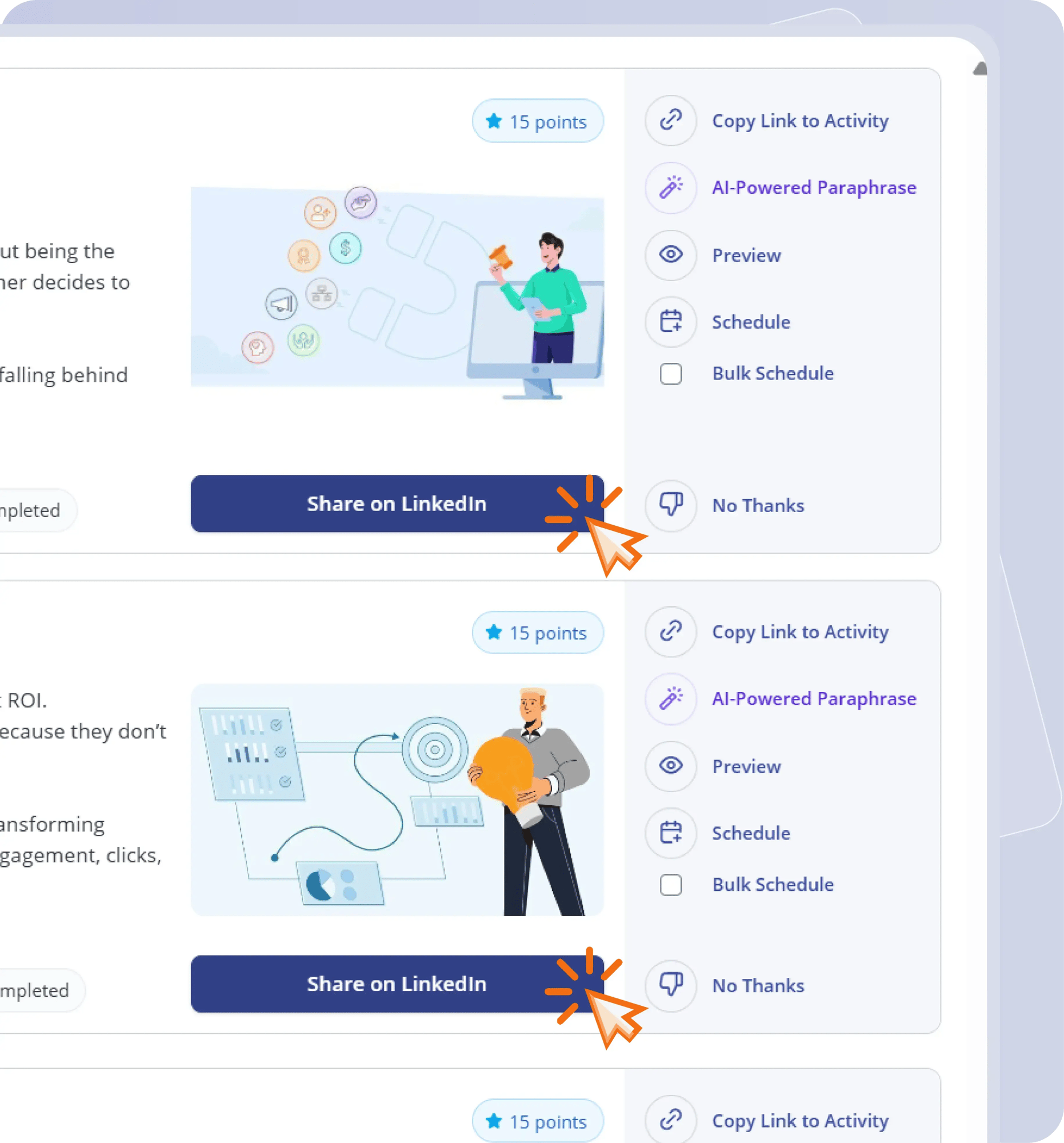
"[GaggleAMP] helps our employees easily share the right content on their social channels to provide value to their followers, and it also increases the reach of our company messages."

Jamie Goddard
Senior Social Media StrategistCapture New Audiences
Encourage Your Employees to Share on Social Media
Tap into your greatest advocates — your employees! Provide your employees with content they can share to their social networks. Create one-click engagement activities, comments, shares, and more, all in one easy-t0-use integrated To-Do list.
-
Create immediate engagement from your employee advocates with activities sent right to their To-Do dashboard.
-
Most Gaggle Members spend less than 3 minutes per week completing activities or scheduling them throughout the week.
-
Measure your efforts with Manager reports and dazzle Members with their My Impact report.
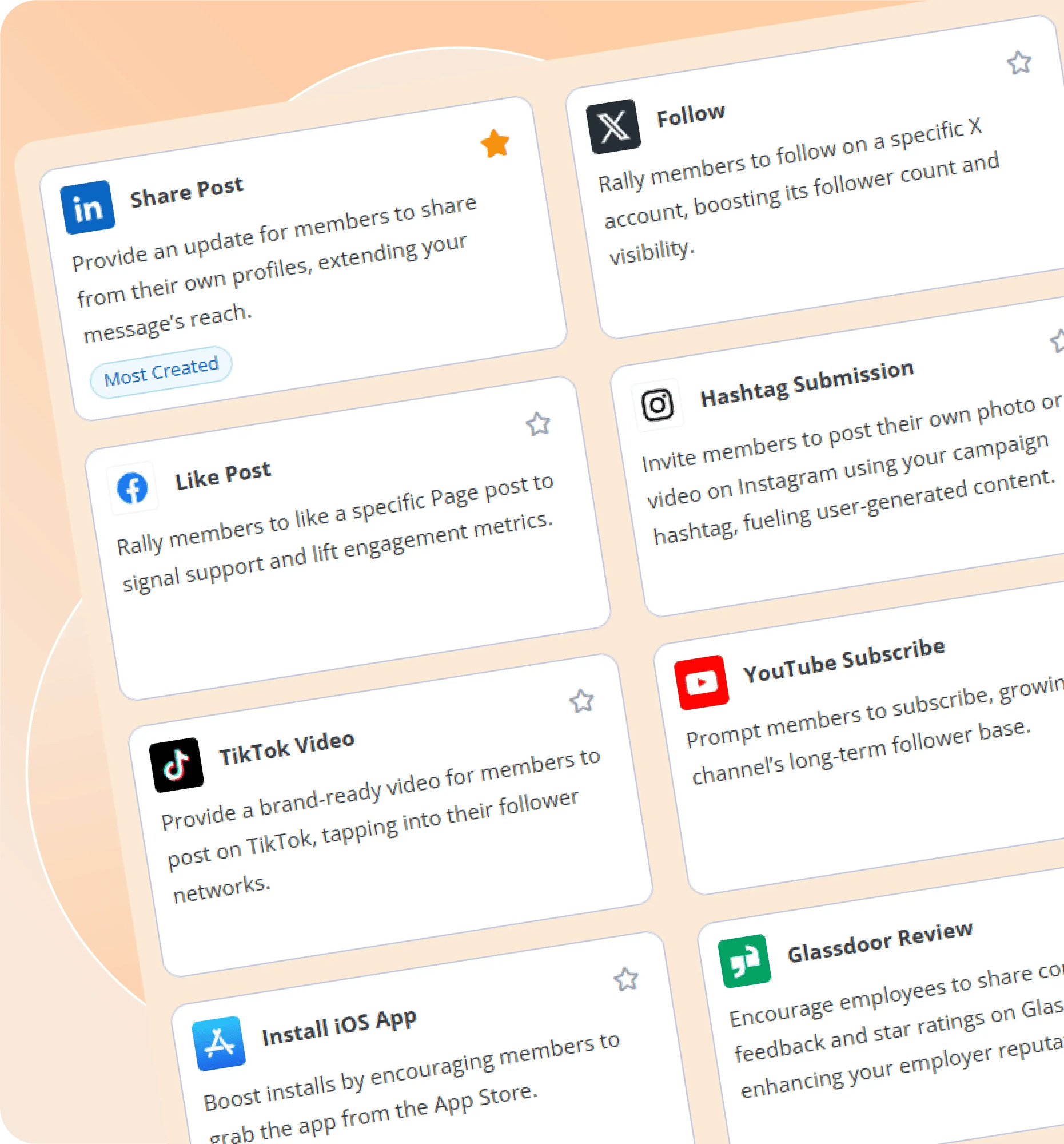
Enablement
Track Performance & Measure Your Audience Reach
Social media marketing is all about publishing social posts that target your audience and customers where they are. As they socially interact with your brand and your employees, they learn more about your products and services, while building a community. Understand what content best resonates on your branded handles, encourage engagement from your employee advocates, and spend more time on what works best for your audience.
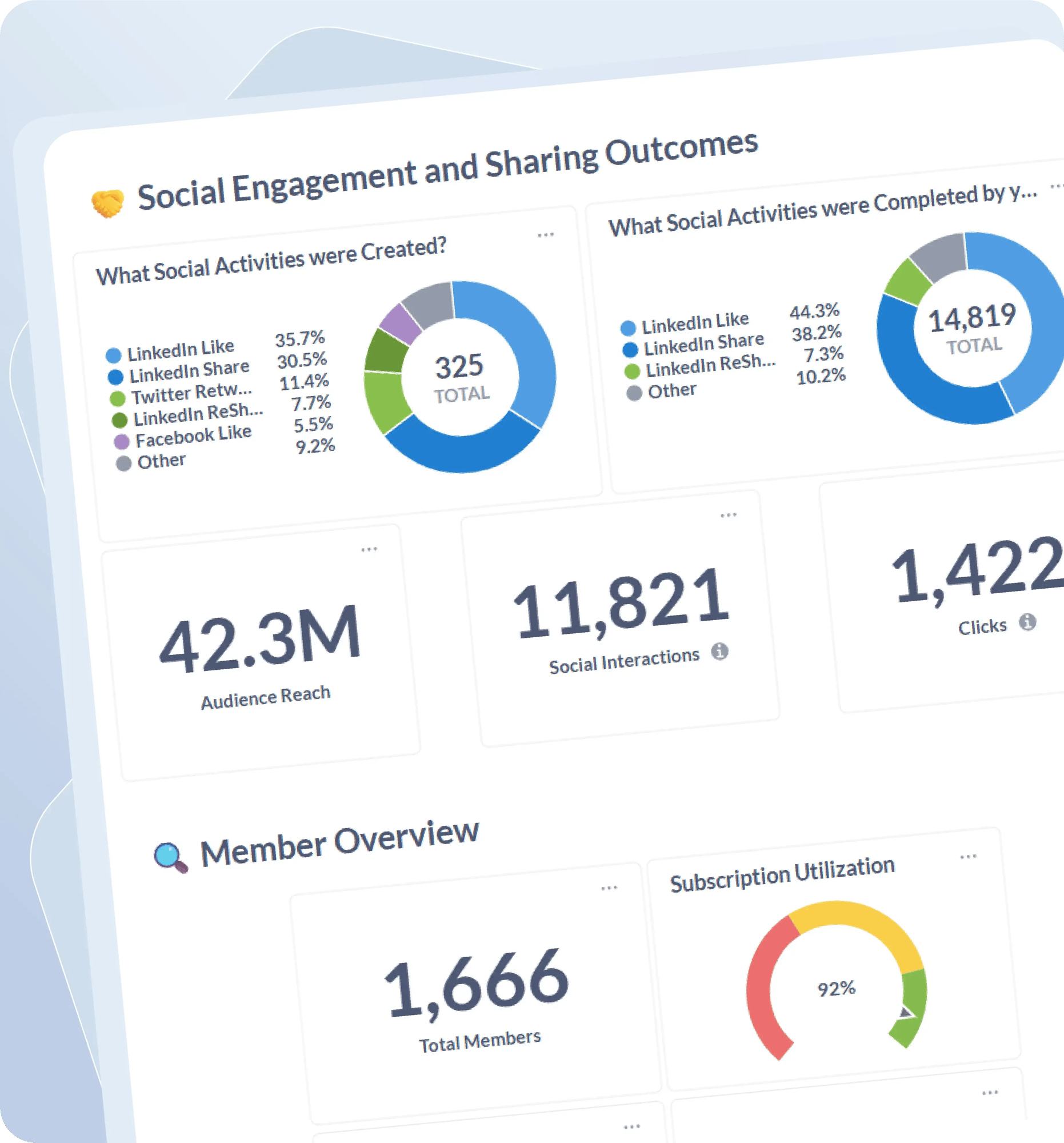
Real Customers. Real Results.
1.9M
HR Acuity boosted their brand reach to over 1.9M in under 90 days with just 54 members.
489%
Capital Rx saw a 489% increase in their total social interactions after deploying a 30-person employee advocacy pilot program.
54%
Learnerbly's increase in new user traffic to the website in just one quarter, all stemming from organic social media.
Strengthen Your Brand With
Employee Advocacy
Employee advocacy is an invaluable component of a brand’s marketing strategy. By using a brand’s own workforce, it harnesses the collective power of its employees' personal networks and social media presence to amplify the reach and credibility of the brand’s message. By understanding employee advocacy meaning, businesses can foster a culture where employees feel engaged, valued, and motivated to share their positive experiences with others.
At its core, employee advocacy seeks to empower employees as brand ambassadors who help raise awareness about a company's products, services, values, and workplace environment. As you explore what is employee advocacy further, you will find that it is not merely limited to online interactions but also manifests in offline conversations with friends, family members, and professional connections.
In an era when consumers are increasingly skeptical about traditional advertising methods, the significance of employee advocacy cannot be overstated. People tend to trust recommendations from those they know personally far more than promotional content from corporate sources. This makes it crucial for brands to leverage this influence strategically through meaningful engagement with their workforce.
Why Is Employee Advocacy Important?
There are numerous potential benefits for companies that successfully implement this approach. One advantage is that it can boost brand visibility exponentially as employees share content within their social circles – each person's network represents a new audience for the company's message. This cascading effect allows businesses to tap into larger communities beyond their immediate customer base or industry niche.
Another key advantage of employee advocacy is its ability to humanize a company by showcasing relatable personal experiences rather than polished marketing rhetoric. This helps create a positive perception among potential customers who see your company as authentic and trustworthy. Moreover, fostering an environment where employees become advocates has significant implications for talent acquisition and retention.
When your staff members feel genuinely invested in your brand ethos and take pride in working for your company, they are more likely to recommend it as an employer of choice among their connections. This attracts top professionals who see a strong company culture and brand reputation as essential factors when considering job opportunities.
Employee advocacy is a multifaceted approach that entails empowering your workforce to become active promoters of your brand across various platforms. By nurturing this sense of ownership and pride among employees, companies can reap the rewards of increased brand visibility, consumer trust, and talent acquisition — all crucial elements for business success in today's competitive landscape.
Employee Advocacy Statistics
Employee advocacy statistics showcase the potential of empowering employees to become brand advocates, promoting their company’s values, products, and services through their personal networks. By harnessing the influence and reach of employees, companies can elevate their brand reputation, enhance customer trust, and ultimately drive business growth. Delving into brand advocacy stats reveals some compelling insights into the power that employees wield as brand ambassadors.
The State of Employee Advocacy Report shows that employee advocacy programs with GaggleAMP can more than 5X social media engagement and deliver as much as 25X the ROI. Furthermore, employee-shared content is re-shared 24 times more frequently than when posted by a brand itself.
An examination of employee advocacy statistics forecasts an increasingly significant role for this marketing tactic in the coming years. As social media platforms continue to dominate digital communication and online interactions become further ingrained in our daily lives, tapping into employees' social networks will be critical for businesses seeking to amplify their reach and impact.
This upward trajectory in employee advocacy adoption is fueled by various factors converging to promote increased workplace engagement. For instance, remote work policies have accelerated due to recent global events; this shift towards decentralization necessitates new methods for fostering team cohesion and commitment to brand goals. Employee advocacy programs are well-suited to address these challenges by encouraging staff members to take ownership of their employer's brand narrative and share it with pride.
Moreover, technological advances have streamlined the process of implementing such initiatives within a company's structure. Numerous software solutions now exist on the market that equip companies with tools specifically designed to facilitate employee sharing, measurement of program success metrics, and even gamification elements to increase participation rates steadily.
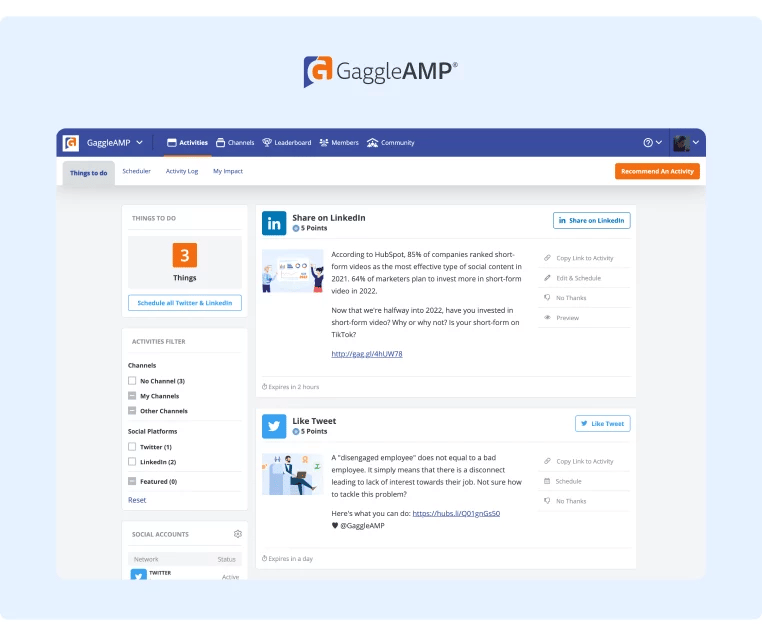 An example of activities served on the GaggleAMP ‘Things to Do’ activities list.
An example of activities served on the GaggleAMP ‘Things to Do’ activities list.
Employee advocacy statistics demonstrate the value of leveraging your workforce as ambassadors for your brand message. Brand advocacy stats show that this approach results in higher engagement rates and fosters a company’s greater sense of community. As projections indicate continued growth in this space moving toward 2024, companies that embrace and invest in employee advocacy stand to reap substantial rewards in terms of brand visibility, customer loyalty, and overall business performance.
Employee Advocacy Benefits
Employee advocacy benefits for employees have become an increasingly significant factor in the modern workplace as companies seek to leverage their workforce to amplify brand awareness and improve overall business performance. These benefits extend to the company and individual employees participating in employee advocacy programs. By exploring various aspects such as higher engagements, increased website traffic, and employee advocacy benefits examples, one can better understand how these initiatives can drive growth and success for all stakeholders involved.
Brand awareness is one critical aspect that stands to be positively impacted by employee advocacy efforts. When employees actively share company-related content and promote their employer's vision on social media platforms, they expand the brand’s reach and visibility. This increased exposure fosters familiarity with the company's brand among potential customers or clients and can lead to new business opportunities.
Higher engagements are another compelling advantage of employee advocacy initiatives. By encouraging employees to be more active in sharing and discussing company content on social media, brands effectively tap into the vast networks of connections that individual workers possess.
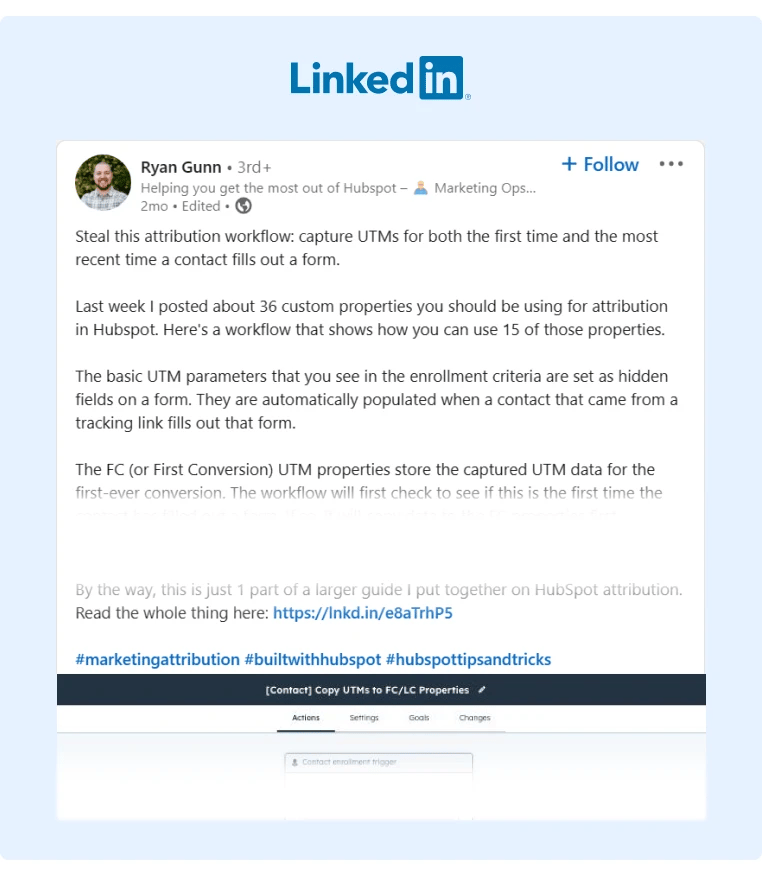 Source: Ryan Gunn
Source: Ryan Gunn
Each employee interaction with followers or friends online increases the likelihood of further engagement with the brand, leading to a more robust online presence for the company. Increased website traffic often follows from higher engagements generated through employee advocacy efforts.
Employees who share valuable content from their employers on social media platforms such as Facebook or X (formerly Twitter) generate interest from within their networks. This curiosity can lead users back to the company’s main site or product pages, which may help boost sales conversions over time.
For more on how Teachstone amplified their executive leaders and
boosted conversations from LinkedIn, check out their case study.
Employee advocacy benefits examples include heightened morale within teams who feel proud to represent their employer online or participate in meaningful discussions about industry trends alongside colleagues.
Additionally, evidence supports improved professional development outcomes for staff engaged in these activities due to expanded skill sets acquired by participating in digital communications campaigns.
There are ample reasons for employers and employees alike to embrace employee advocacy programs, as both parties stand to benefit significantly from such involvement. The heightened brand awareness, increased engagements, and improved website traffic resulting from these initiatives can ultimately lead to a more robust online presence that drives success for the brand. Furthermore, employees who engage in these advocacy efforts will likely enjoy an enhanced sense of purpose and professional growth opportunities within the company.
Employee Advocacy Examples
Employee advocacy is a powerful marketing strategy that involves encouraging and empowering employees to become brand ambassadors for their company. By leveraging their personal networks, employees can increase brand visibility, credibility, and trust among potential customers. Looking at a company advocacy example online can help you find the best strategies to achieve this kind of encouragement.
The best employee advocacy examples illustrate how companies can empower their employees by providing tools, guidelines, or incentives for promoting brand messages within their networks. Employee advocacy examples for employees effectively demonstrate practical ways to support your team members.
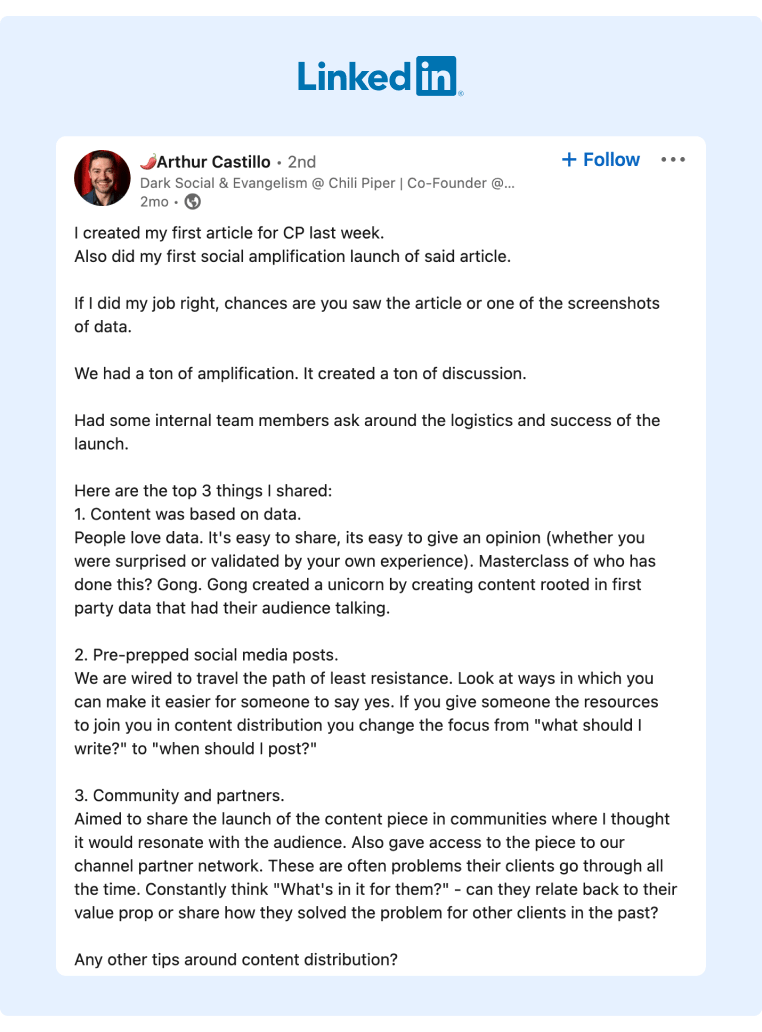 Source: Arthur Castillo
Source: Arthur Castillo
When executed effectively, these efforts can help boost visibility, build credibility among target audiences, and foster stronger connections between companies and consumers. By embracing employee advocacy as a key component of modern business strategy, leaders can tap into a powerful resource - their own workforce - to achieve long-term success.
Employee Advocacy Strategy
Employee advocacy strategy is a crucial aspect of modern business practices, which entails harnessing the power of employees' personal networks to promote and endorse a brand. This can include sharing company news, participating in industry discussions, and providing authentic insights into the culture and values of the company.
One of the best employee advocacy examples can be found in companies that have successfully implemented comprehensive employee advocacy programs. These programs typically involve training employees on how to effectively share company updates, engage with their networks online, and provide them with curated content that aligns with the company’s messaging.
By empowering employees to become brand ambassadors, companies can benefit from increased reach, credibility, and trust among their target audience. An employee advocacy strategy example that showcases success is when a well-established brand encourages its staff members to share company-related content on their personal social media channels. This helps create a positive buzz around the brand and provides social proof for potential customers who may be more inclined to trust their peers over traditional marketing messages.
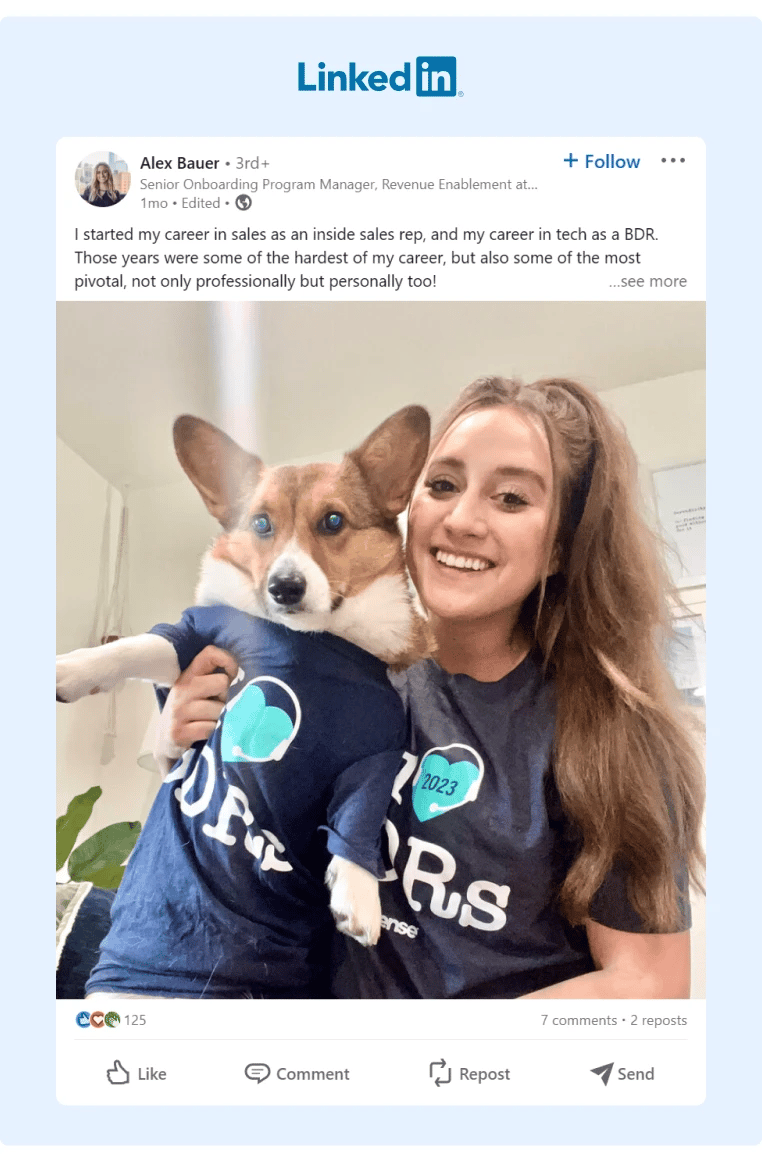 Source: Alex Bauer
Source: Alex Bauer
To ensure that employee advocacy best practices are followed within a company, it's crucial to provide clear guidelines on what content can be shared and how it should be communicated. Companies should strive to maintain a consistent brand voice across all platforms while encouraging genuine interactions between employees and their networks. Additionally, recognizing and rewarding those actively advocating for the company can help foster a sense of pride and encourage others to follow suit.
Crafting an effective employee advocacy strategy involves tapping into the potential of your workforce by enabling them to share valuable insights about your brand through their personal connections. By incorporating some of the best employee advocacy examples as inspiration and prioritizing employee advocacy programs within your business, you'll stand to reap numerous benefits like increased exposure, credibility, and customer trust. As you craft your strategy, always adhere to employee advocacy best practices to optimize your efforts for maximum impact while fostering a positive work culture.
Employee Advocacy Tools
Employee advocacy tools are essential in today's digitally connected world. They provide companies with a comprehensive platform to amplify their brand messages, reach wider audiences, and increase engagement levels.
By improving internal communication, these software solutions empower employees to become active advocates for their companies, sharing relevant content on their social media channels and promoting a positive corporate image. Among the many employee advocacy tools available, some of the best employee advocacy platforms stand out for their innovative features and user-friendly interfaces. These platforms help streamline processes and ease the burden of managing multiple social media accounts for different teams within a company.
Moreover, they enable employees to easily share company-approved content across various networks while tracking engagement metrics and performance analytics. Employee advocacy software plays a crucial role in boosting a company's online presence. From pre-built content libraries that simplify the process of curating engaging posts to automation tools that ensure timely posting across different time zones, these advanced systems offer numerous advantages for businesses looking to leverage the power of social media marketing.
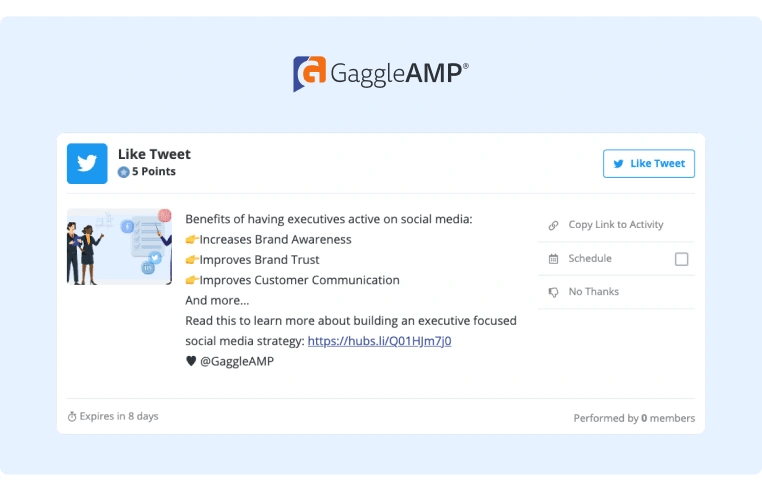 One notable aspect of employee advocacy tools is their ability to integrate with popular social media networks like Facebook, X (formerly Twitter), LinkedIn, and Instagram. This seamless integration allows users to share relevant content directly from the platform without having to switch between apps or websites.
One notable aspect of employee advocacy tools is their ability to integrate with popular social media networks like Facebook, X (formerly Twitter), LinkedIn, and Instagram. This seamless integration allows users to share relevant content directly from the platform without having to switch between apps or websites.
Moreover, companies can harness the power of employee-generated content by encouraging team members to contribute blog posts or other materials that can be shared across various channels. Aside from improving a company's digital footprint and fostering a culture of collaboration among employees, utilizing employee advocacy social media tools can also lead to tangible business results such as increased website traffic and lead generation.
Furthermore, by empowering staff members to speak on behalf of their company in an authentic manner, companies can humanize their brand identity and build stronger relationships with target audiences.
Incorporating effective employee advocacy tools into a company's marketing strategy offers numerous benefits that should not be overlooked. By leveraging powerful platforms designed specifically for this purpose — alongside the potential of employee-generated content — brands can amplify their reach, increase engagement, and ultimately achieve a more positive and influential online presence.
GaggleAMP can boost your employee advocacy and strengthen your social media presence. Schedule a meeting today.
